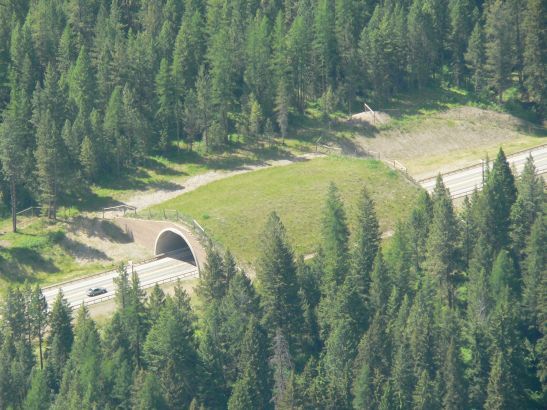Every day mountain lions risk their lives as they cross Highway 101 in Los Angeles.
The National Park Service has been conducting a study since 2002 that is building a case for constructing a wildlife bridge over the 10-lane-freeway in order to save these lions, Adam Popescu reported in a story for the Washington Post.
The study involves tracking, trapping, darting, swapping out radio-collar batteries and taking tissue samples of the city’s mountain lion population in order to better understand their movements in the urban environment.
The lions in the Santa Monica Mountains bisecting L.A. are confined by freeways. This isolation results in increased competition for territory and mates among the animals. Experts say the $55 million project may be the lions’ last hope for survival, according to the Washington Post.
Since 2002, 12 lions have been killed in car collisions after attempting to cross the freeways in search of new territory. Others have died from eating prey laced with rodent poison. Only once, in 2009, did a lion successfully cross Highway 101.
In an article for the “Roads Kill” project, Pulitzer Center grantee Robert Chaney explains that critter crossings can also save human lives.
“While animal impacts make up less than 1 percent of U.S. fatal road incidents, they cause almost 29,000 injuries and $1 billion in property damage a year, according to federal Department of Transportation reports,” he wrote.
According to Chaney, motorists report about 1.2 million wildlife collisions every year. In addition, hitting an animal is the number one or two cause of vehicle damage listed in the Forest Service annual reports. Animals in danger of becoming roadkill in the U.S. are deer, bears, bobcats and turtles, among others. Animal-impacted collisions have reduced the population of the ocelot—a federally endangered feline—to about 80.
Wildlife bridges have already been built in various states across the U.S., but the one in L.A. will be the nation’s first wildlife crossing in a metropolitan setting. A 56-mile stretch along the Mission Mountains in Montana has 41 crossing structures. Washington, Florida and New Jersey also have wildlife passageways.
However, not all highways have wildlife pathways, so animals still occasionally traverse across freeways. To avoid animal impacted collisions, practice the following safe driving techniques:
- Be particularly alert when driving in wildlife territories. Look for reflecting eyes.
- Slow down and increase the distance between you and other cars.
- Wildlife is most active during dusk, dawn and night. Reduce your driving in wildlife areas during those times.
- Make sure your windshield is clean and your dashboard clear of all objects that may obstruct your view.
- Familiarize yourself with wildlife behavior.
For more tips, visit the websites of the DMV and Defenders of Wildlife.
